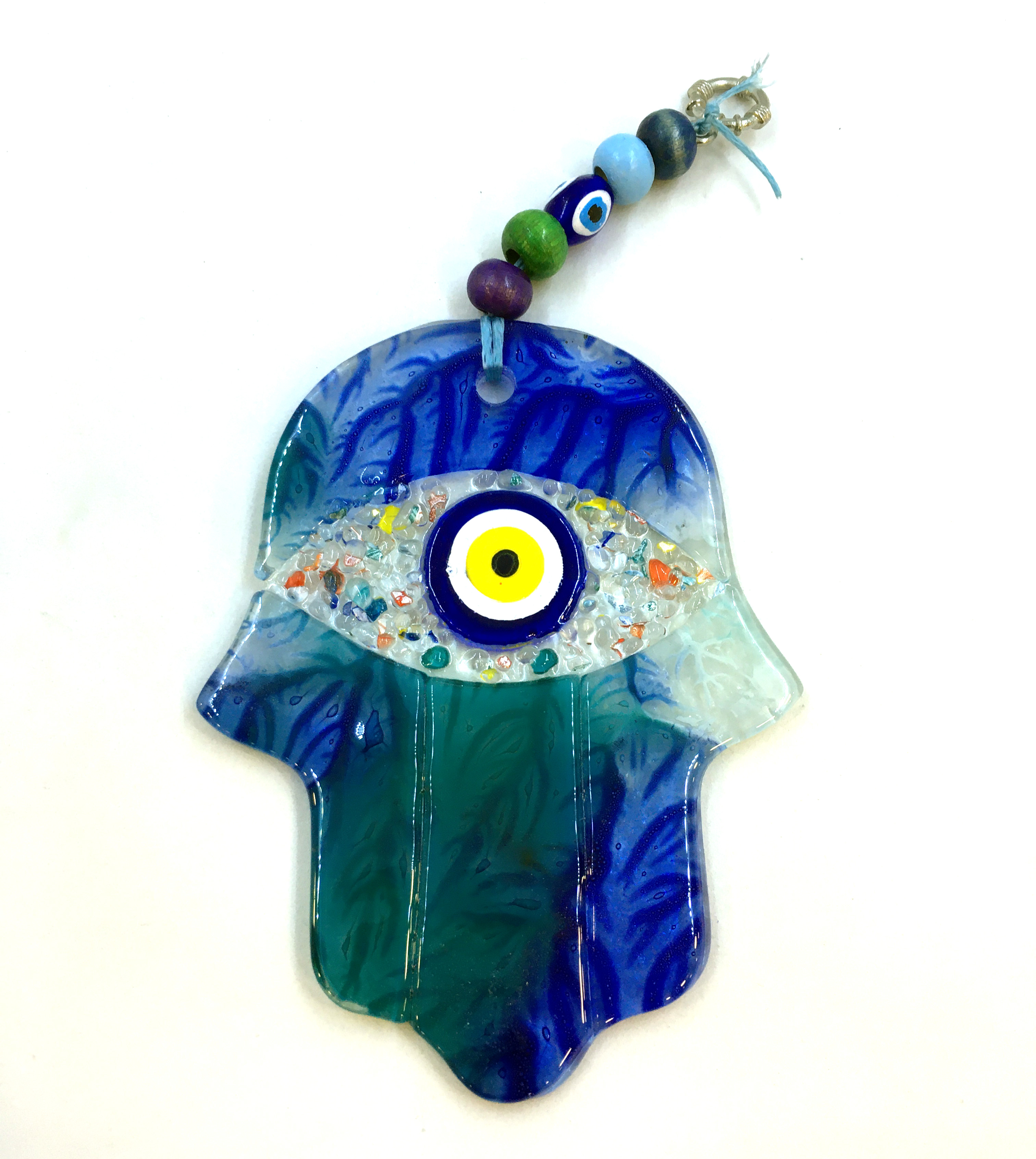The Hamsa Hand is an ancient Middle Eastern symbol that represents the hand of God. In all faiths Hamsa meaning protective image, often worn as a talisman. Hamsa meaning has a wide variety of spellings, including hamesh, hamsa, chamsa, and khamsa. (Hebrew and Arabic words for "five," but also "the five fingers of the hand.")
A Hamsa is an open right hand, an image that dates back to the dawn of homo sapiens: stone-age cave paintings frequently feature the silhouettes of hands, and in plenty.
Early civilization's use of the Hamsa has been traced to ancient Carthage (now Tunisia) and ancient Mesopotamia (modern-day Iraq), as evidenced by artifacts and amulets of the goddess Ishtar or Inanna.




More recently, circa 615 AD, Fatima al-Zahra was born to the Islamic prophet Mohammad. She was his youngest and most favored daughter, and by all accounts led a saintly life. Muslim interpretation of the Qur'anic verse 3:42 links the praise of Mary, the mother of Jesus, with that of Fatimah," based on a quote attributed to Muhammad listing the outstanding women of all time as Mary, Asiya (the wife of the Pharaoh of the Exodus and mother of Moses/Musa), Khadjia, and Fatima. Hamsas became know as hands of Fatimah
But what Hamsa meaning for other religions?
In the language of Judaism, the number five is Hebrew for hamesh, and the fifth letter of the Hebrew alphabet is hey, one of God's holy names. Hamesh is representative of the five books of the Torah. Judaism also interprets the Hamesh to be the hand of Miriam (sister of Moses), and symbolic of the owner's five senses employed in efforts to praise God. It would not be unusual for an Islamic symbol to find its way into Sephardic Jewish culture, which flourished alongside Islam. However, amulets are somewhat problematic in Judaism because the Bible prohibits magic and divination. Still, the Talmud refers on several occasions to amulets. One law allows for carrying an approved amulet on the Sabbath, which suggests that amulets were common amongst Jews at some points in history. Contemporary Jewish culture cares little about such things; although it may derive from Islam, the Hamsa today has become a Jewish and Israeli symbol.
In Christianity also, there is dissent about whether an amulet constitutes idolatry (which dissent oddly overlooks the use of the cross and crucifixes), but it is significant that "Fatima" is a Catholic title of the Virgin Mary. This title is based on the apparitions of Mary reported in 1917 by three children at the Cova de Iria in Fatima, Portugal. In her memoirs, one of those children, Lucia dos Santos, who was ten when the Lady appeared to her, stated that acts of injustice and a lack of charity towards the poor—"widows and orphans, the ignorant and the helpless"—were even worse than the "sin" of being non-Catholic. The Church was so displeased with both the 1917 revelations and Santos' steadfast ecumenical views that it was not until 1967 that a pope visited the shrine at Fatima and prayed with Lucia, who at the age of 18 had entered a convent to eventually become Sister Maria das Dores (Maria of the Sorrows). All of this history muddies the issue of whether or not the hand of Fatima is a Christian symbol, but many Christians do wear it as a protective talisman.
In Morocco, the Hamsa meaing Khamsa or Khmisa and is widely used as a protection from bad luck and evil people. North Africans in general incorporate Hamsas in home decor items, but the most common use is in jewelry. In fact, most Moroccan women have at least one jewelry item with a Hamsa.
The Native American Southeastern Ceremonial Complex also contained images of a human hand with an eye in the palm. However, the meaning and purpose are not well defined.
According to Hindus and Buddhists, the Hamsa is meaning the flow of energy of the chakras in your body as well as the five senses and mudras. Each finger of the Hamsa is representative of a chakra and an element.
Here you can check out: Hamsa collection.